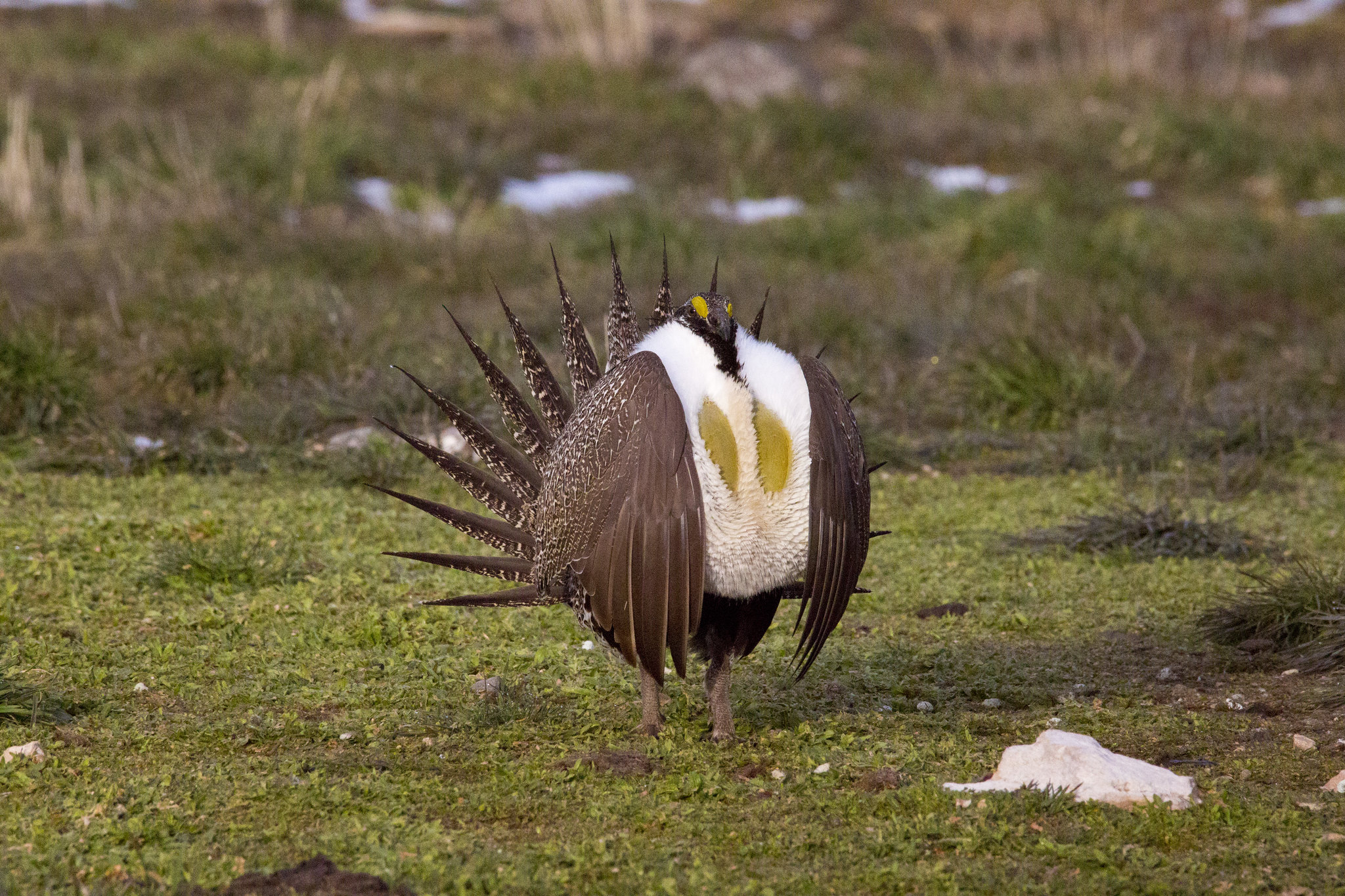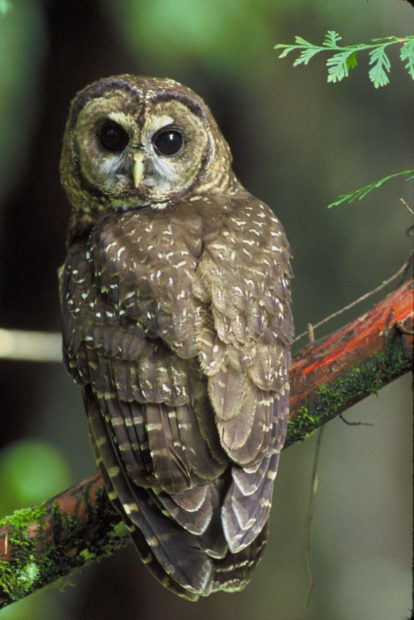We have much more to do and your continued support is needed now more than ever.
4 Wildlife Species That Need Your Help This Wildfire Season

An epic drought is unfolding across the West. In Washington and Oregon, March and April were among the driest since the 1890s, leaving many streams at 25% of their typical flow for this time of year. This was in spite of a normal or above-normal snowpack in the mountains this year, but not all watersheds are fed by melting snow. Low spring precipitation has led to low waterflows. Lakes, rivers, and wetlands are running dry. This is fueling conditions for wildfires—bigger, hotter megafires— and this summer’s wildfire predictions for the West are grim.
A recent story in the Seattle Times highlighted the long-term effects of the uncontrolled wildfires in Washington, Oregon and California last year. Ultra-hot megafires can destroy complete forest stands and burn across entire landscapes. If hot enough, extreme fires can even sterilize the soil by killing subsurface seed banks that normally aid in post-fire recovery. They also leave a deep imprint on waterways. A repeat of last year’s wildfire season could compound these impacts, raising risks to endangered wildlife species.
Salmon and Steelhead
Most people don’t think of salmon when wildfires strike. However, not only do salmon need water, they need cold water. Water temperatures over 68 degrees are often fatal to this anadromous fish. The searing intensity of wildfires is readily felt below the water line—when fires strike and long after they have passed. This is dangerous to diminishing salmon runs in the short-and long-term.
Immediately after the fire, exposed sediment, soil ash, and detritus from resulting landslides, dramatically alter the underwater landscape. They can flood and ruin spawning sites and increase the nitrogen content and acidity of the water. Long after the fire has passed, the impacts continue to compound.

The loss of streamside plants and increased exposure to the sun can continue to push temperatures higher. Moreover, the diminished water flows as a result of this year’s drought means that there is less water in rivers and streams, which will then heat faster. Recent research is pointing toward measures such as beaver restoration and protections of riparian zones to counter these impacts and to make watersheds more resilient.
In the Columbia River Basin, 13 populations of fish are endangered and a study from the Nez Perce Tribe documents that given current trends, nearly 80% of wild spring chinook populations in the Snake River Basin will be nearing extinction by 2025. This year’s wildfire risk underscores fish biologists’ warnings that the endangered populations could be just one catastrophic event away from extinction. In the face of climate change, the risk of a potentially catastrophic event increases each year.
Pygmy Rabbits

The inferno that raged across Washington last year wiped out nearly half of the population of the endangered Columbia Basin pygmy rabbit population. Washington Department of Fish and Wildlife biologists confirmed a minimum of 164 pygmy rabbits in Washington 2020, but the fires burned through the area occupied by 70 of those rabbits — a 43% loss.
Biologists held out hope that rabbits which had survived in their burrows in previous fires would do so again. However, last year’s fire, which burned so hot it destroyed plants deep into the subsoil, also consumed all the oxygen in the rabbits’ burrows. All told, a decade’s worth of infrastructure and work to restore pygmy rabbit populations were consumed in the 2020 megafire.
Sage Grouse and Sharp-Tailed Grouse
Fast-moving fires sweeping across the ground destroy critical breeding grounds. For the sage grouse and sharp-tailed grouse, last year’s flames reduced populations to dangerously low levels. Wildlife managers estimate the population of 775 sage grouse in 2020 is now reduced to 699 birds. Sharp-tailed grouse are down by nearly 25%, with perhaps just 660 birds remaining. The survivors are left without the critical brush cover they need to raise young.

Sage grouse—as we might expect—favor sagebrush for habitat and food. The sagebrush ecosystem is the largest interconnected habitat in North America and this keystone plant supports over 350 species, including the pygmy rabbit. Sagebrush is considered “the grocery store” in the region’s desert ecosystems, and during the winter it becomes almost 100% of the adult sage grouse diet.
One of the long-term impacts of burns is the colonization by invasive vegetation like cheat grass. This habitat change is a critical loss for the long-term survival of sage grouse.
Northern Spotted Owl

Northern spotted owls largely rely on old-growth forest, which have been vastly diminished by logging and development. Old growth trees are often 150-200 years old, and these forests take time to regenerate. The loss of habitat has led to a rapid decline in spotted owl populations.
An estimated 14,000 mating pairs were left in the Pacific Northwest three years after their listing by the Endangered Species Act, in 1993. The 2020 Labor Day wildfires that ignited in Oregon dealt a major blow to the fragile population that remained, pushing them closer to the “extinction vortex.” Researchers fear less than 3,000 breeding pairs remain.
Native, old-growth forests tend to be more resilient to wildfire. However consecutive years of wildfires, growing bigger and more severe, burn so hot that they are consuming old-growth habitat that remains. This is especially concerning given each owl tends to seek areas more than 100 hectares for tree cover, shade, perches, and protection from prey. In previous fire incidents, scientists have determined the impacts of wildfire by documenting the reoccupation of old nesting sites. Empty nests signal another possible wildfire casualty.
We know fires can be both beneficial and detrimental, but we remain in the early stages of truly understanding the extent of the damage from megafires. We tend to catalogue loss of life and homes—yet the loss of our biodiversity comes at a much higher price.
You can help speak out for wild salmon.
Take Action!




















